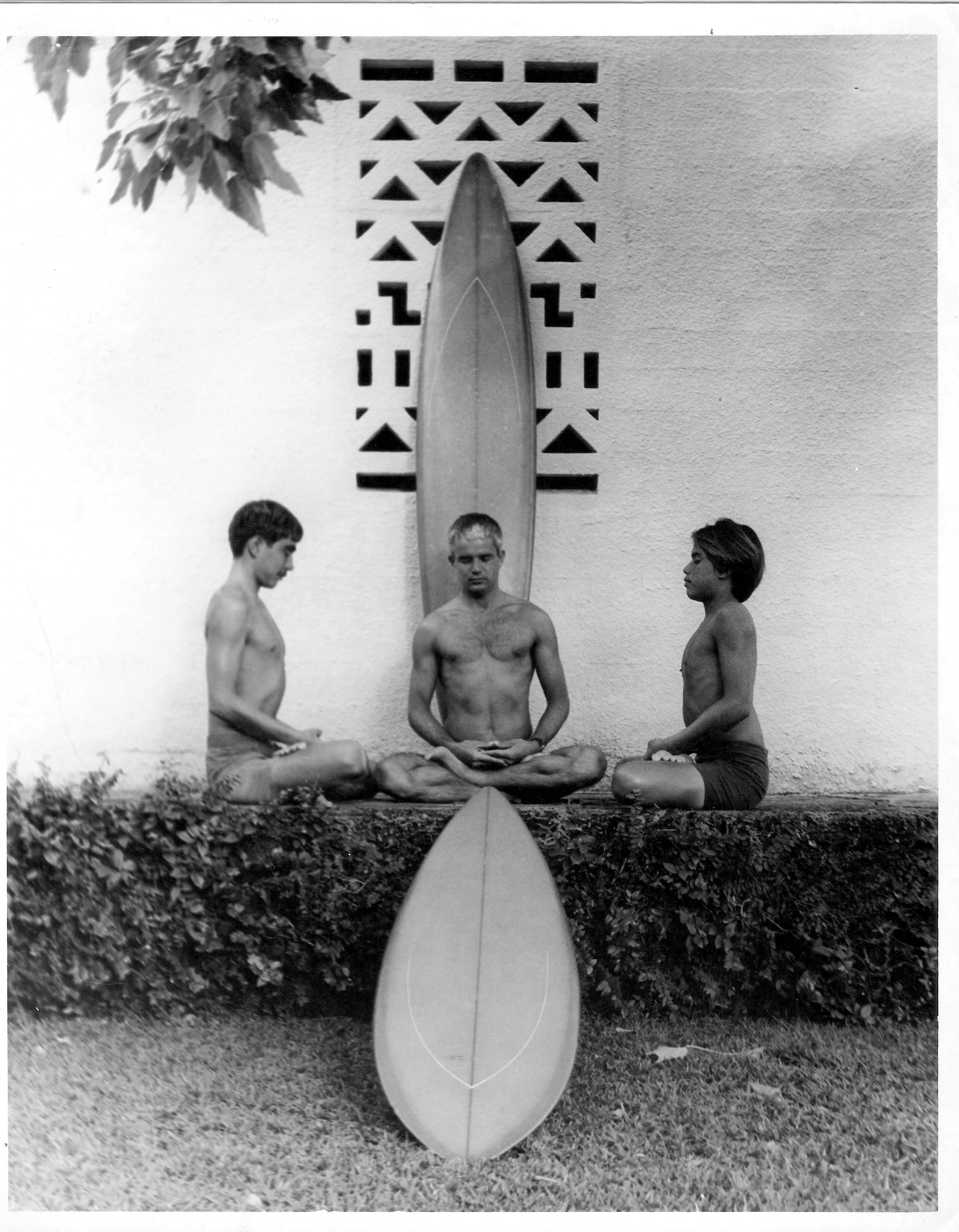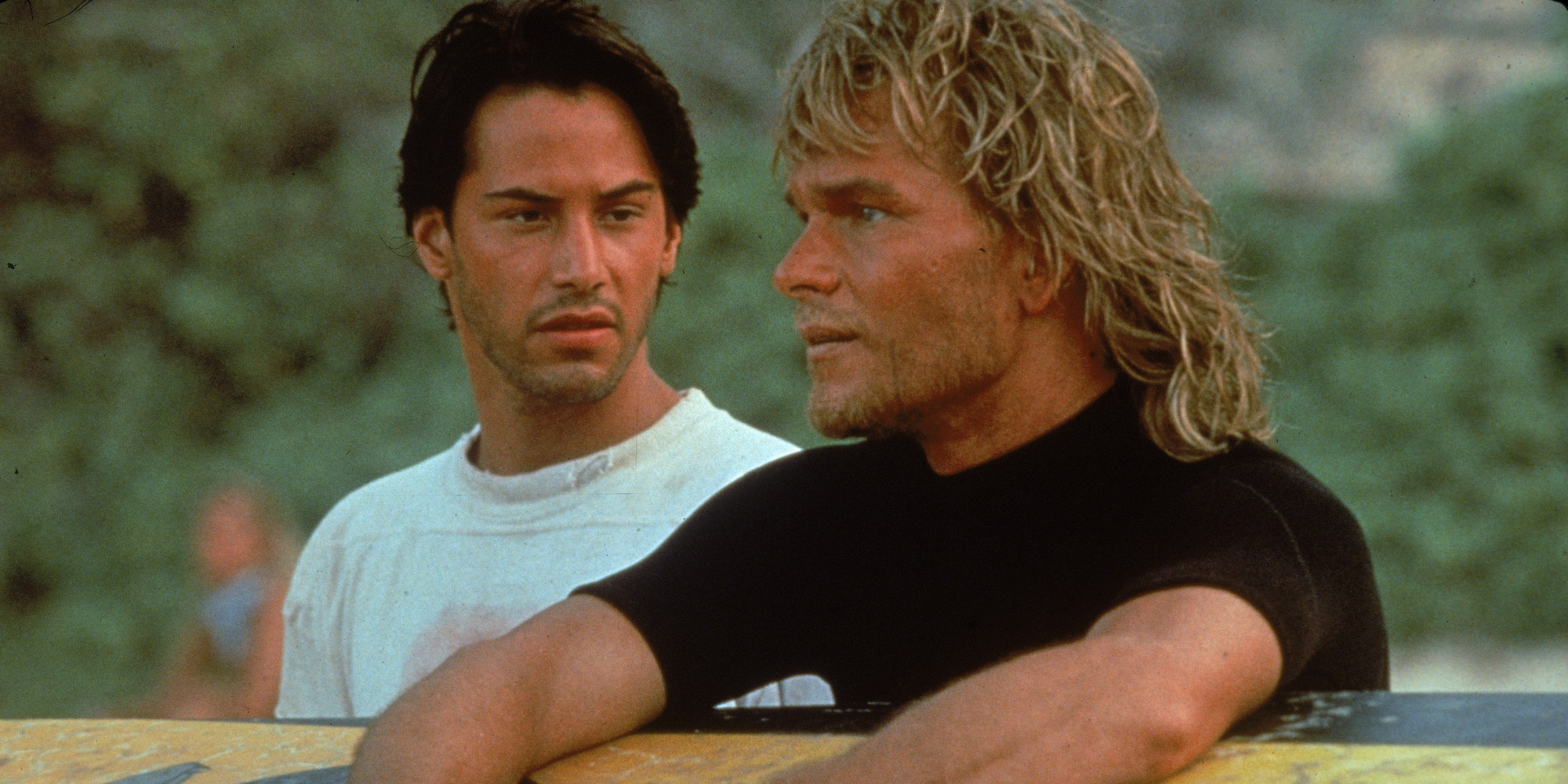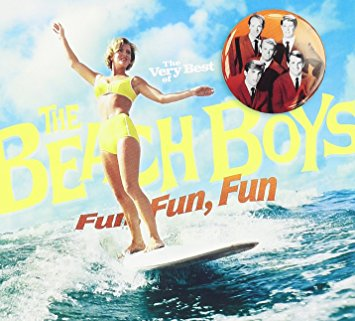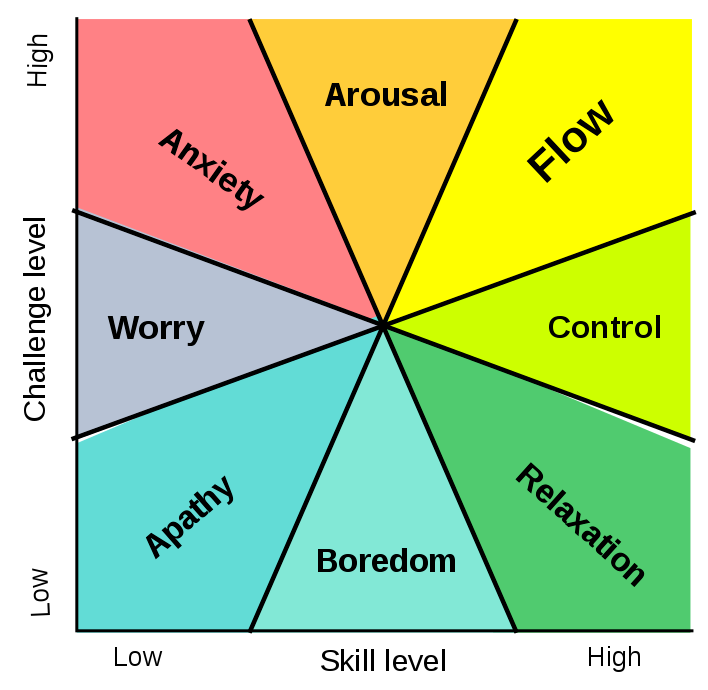My previous article was about the complementarity of Yoga and Surfing, and how a regular practice of Yoga postures (Asanas) can help us balance our body and surf better, longer in our life. I should also mention the positive aspects of Surfing on the body: paddling works the cardiovascular system in different intensities by strongly soliciting the upper body muscles (back, shoulders, arms). When the waves are worth it, it is really easy to push ourselves to fatigue or even muscular failure (noodle arms). And as every sportsman knows, when the body gets a good workout, the mind feels good as well, thank you endorphins and dopamine!
But the main benefits of Surfing reside on another, more spiritual plane. I am aware that the Body-Mind dualism à la Descartes is rather awkward to deal with such a subject, but well I guess my French education left its mark …. In this article I will evoke the deep nature of the links between Yoga and Surfing, and how the two practices can nourish each other.

The goal of Yoga: the realization of our true nature, the union with the Absolute (experience that Yoga names Samadhi), the permanent consciousness of our connection to everything that surrounds us …
The goal of Surfing: having some fun riding waves …
Presented like that, it is quite distant 🙂 but going slightly further, we can venture to say that we surf because it does us good, right? To our body, ok, but also, and particularly, to our mind. And still, quite differently from a jog …. As any surfer will tell you (probably also any surfer partner), a session, even not a very good one, greatly improves the mood. This is also known as “the one that goes surfing is always right“.
Surfing calms us and gives us a positive look on the world.
In Surf lingo we talk about “Stoke“, this particular mental state that occurs after a good session, or even sometimes after a good wave. Classically better than sex according to some, this state can be characterized as a joy lasting from a few hours to several days for extraordinary sessions. It is the search for this sensation that underpins the regular practice of Surfing, and makes it so special.
In my opinion this state of joy, this Stoke, is linked to a momentary glimpse of Samadhi during Surfing. The experience of a brief moment during which a union occurs between us and something greater. A transcendence.
Surfing is Yoga.

There are in fact many parallels between Surfing and spirituality, as well as between Surfing and religion. In Polynesia, where Surfing was born, the traditional practice was rhythmed with sacraments, prayers, songs and offerings to the gods.
More contemporary examples: the Christian surfers, an American evangelical organization, relies on Surfing to spread their message, by surfers, to surfers. Surfing Rabbi, Nachum Shifren, an Orthodox Jewish priest also uses Surfing as a medium for his religion.
One common thing: Surfing helps one to get closer to the Divine.
However it is quite clear that the average Surfing joe often does not feel concerned at all by religion, probably the libertarian legacy of Surfing counterculture since the 60s and 70s.

However, in Surfing counterculture background, spirituality is omnipresent.
For Tom Blake, the father of modern Surfing, Nature is God, and God is Nature (Nature = God). Blake, a great competitive swimmer, discovered Surfing in Hawaii in the 1920s and devoted the rest of his days to pioneering a way of life closer to the Ocean and Nature (nomadism, vegetarianism, philosophy, …) bridging Surfing polynesian roots and the “modern” western civilization.

The iconic californian magazine Surfer was created in the 60s and partly inspired by Blake lifestyle. Its founder, John Severson, later associated psychedelia of the time by publishing Rick Griffin illustrations amongst articles and photos picturing remote untouched Surfing destinations. In the 70s, Surfing pop culture is strongly tinged with mysticism, the “Soul Surfing“.

Rick Griffin illustration
A couple of other examples: the mythology of Huey, the God of Surfing, written by an Australian surfer in the 70s; the box office movie Point Break (1991) that more or less finely depicts the mystical connection between a surfer (Bodhi aka Patrick Swayze), and the Ocean.

Water and the Sea are sacred symbols since the beginnings of human history. Before that, a few hundred million years ago, our distant ancestors had crawled out of the ocean to live on the mainland. Water is the source of life on our planet. Our body is made up of 60% water (our brain 80%), we float, and we possess at birth the mammalian immersion reflex (instantaneous deceleration of the cardiac rhythm, vasoconstriction).
For some, being in the water evokes reminiscences of intra-utero peace. It is actually an expression used by the surfers to designate the quest for the tube, “back to the womb“.
Then it is natural enough that the surfer, immersed in the Ocean, is touched by this transcendent dimension, consciously or not. In fact, Surfing places us in a situation of relative weakness, of necessary humility. Immersed in that element that we know and love but is no longer truly ours, we must resolve to a certain form of acceptance, or even in some cases, surrender.
I realized that embodying a tea bag on my surfboard represents my privileged contact with Nature. I feel at my place, literally a drop in the Ocean. One of Yoga rules of life (Niyamas) specifies to regularly dedicate our actions to the Divine, to something “greater than oneself”, whatever the personal beliefs. Surfing is a great way to practice that Niyama. We do not go Surfing whenever we want or our various constraints allow us to, but when the waves are there and the Ocean proposes.
“Okay, that’s nice and all that, but I’m surfing because it’s FUN !!!”

The one who surfs has no purpose but to have fun. Surfing is by essence non-productive. We do not surf to improve our physical abilities, muscle strength, or even to show off (nobody recognizes you on the beach anyway, especially with neoprene all over the body). Although with the rise of professional Surfing a real shift occurred towards performance, most of us surf because it is exhilarating, whatever our skills or kind of board.”The best surfer is the one having the most fun”.
What distinguishes Surfing from the other board sports (skateboarding, snowboarding …), and makes it so enjoyable, is that the wave is ever moving, never identical, and in essence completely escapes our control.
Moving on a wave according to what the wave will look like in the next moment immediately puts us in a mental state of Flow, as the psychologist Mihály Csíkszentmihályi calls it. Riding a significant wave means that our brain must simultaneously process a great deal of information. Subsequently, part of the prefrontal cortex is inhibited to devote our maximum processing capacity to Surfing. We temporarily acquire then an overall view of the situation, beyond the focus on the placement of our feet, the fine analysis of the shape of the lip or the trajectory of the bloke paddling on the shoulder.
The action of Surfing a (good) wave instantly makes us entering into meditation: we are operating in the present, totally, welcoming what Nature is giving us, without any parasitic thought related to the past or the future. The downside is the brevity of the experience 🙂 and often also a very partial memory of the good waves that we surfed. Sometimes we only keep in mind one vision after a good ride, which I think explains the inextinguishable thirst of surfers for photos and videos, in order to live the echoes of this experience again and again.
That dissolution of Self, that more or less deep experience of an Union with a whole, is of course not peculiar to surfers. Many athletes have felt and described it (The Zone, aka The Flow). It often involves exceptional sportsmen, such as Ayrton Senna who had evoked a perception of slowed down time and total control during one certain Grand Prix he had flown over. The Flow also concerns artists and researchers during the creation process – Einstein used to think in music and lose the notion of time. The Flow also happens sometimes in our daily life, when we are intensely focused on an activity that we really enjoy. I am now for instance in a particular mental state because this theme has been fascinating me for a long time and the words flow easily, in accordance with the influx of ideas that present themselves to my mind.

Diagram describing Flow conditions – Pr Csíkszentmihályi
From a neurological point of view, the Flow state is characterized by a brain waves slow down, and Alpha waves predominance. This is also what happens during the practice of Yoga, with postures (Asanas), breathing exercises (Pranayama) and meditation (Dharana / Dhyana). And the higher the level of the skills, whatever the practice, the more stable, deep, and easily reproducible that state.
Some excellent surfers have described this very moment when thoughts are suspended and consciousness extends beyond oneself, I think of the South African Shaun Thomson who beautifully put it: “I feel like I can bend waves to my will. Time expands in the tube. “
Everything in the universe is energy, it is what quantum mechanics say, it is also what Yoga says. The waves of the ocean are energy in movement, transmitted by the wind to the Ocean. Same with our thoughts, resulting from the electrical activity of the brain. Ephemeral, calm or agitated, they come and go. Surfing teaches us how to deal with the waves in an attitude of availability and presence. Yoga teaches us how to deal with our mind, developing the same attitude towards our thoughts and emotions. Observe, welcome, let go.

As I said in the introduction, the two practices nourish each other in many ways. Surf and Yoga can each change everything in your life (those in the know, know)… Imagine when you practice them both ! 🙂
Yoga helped me to perceive the spiritual nature of that playing of mine I have been doing in the waves since childhood, to better understand why and how Surfing is so important in my life. Meditation made me realize that in the Ocean too, I am meditating. And how, with the help of the ethical rules that are integral parts of Yoga, Yamas & Niyamas, I can become a better surfer – having more fun, remember.
Because the daily life of a modern surfer is also about dealing with crowds, lousy conditions, localism, frustration at different levels, … all that can easily embark us in negative behaviors and make us miss the essential. It is the moment to find the simple satisfaction of being in the water (Santosha), express cordiality instead of the more or less latent aggressiveness (Ahimsa) and demonstrate a decent behavior at the peak (Asteya, Aparigraha), showing respect to our peers. This is not always easy, a work still in progress, but it changes a lot of things 🙂
And reciprocally, the practice of Surfing can be enriching for the Yogi: renewed meditation experiences and glimpses of Samadhi, connection to Nature (Ishvara pranidhana), but also discipline and commitment (Tapas), because Surfing requires willpower and constant efforts starting from the ungrateful learning phase.
Sea you soon, on the waves, on the mat, or on both!